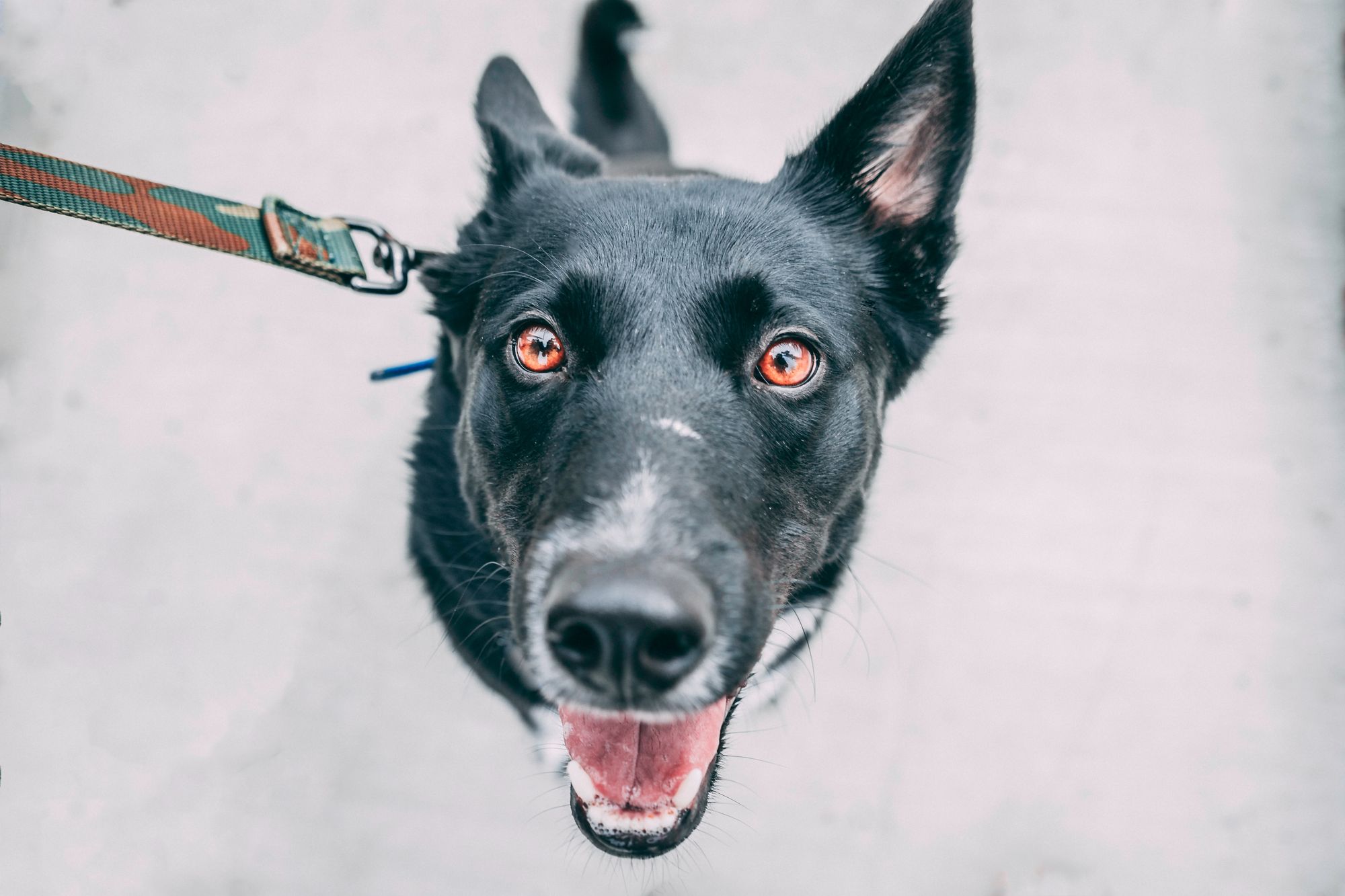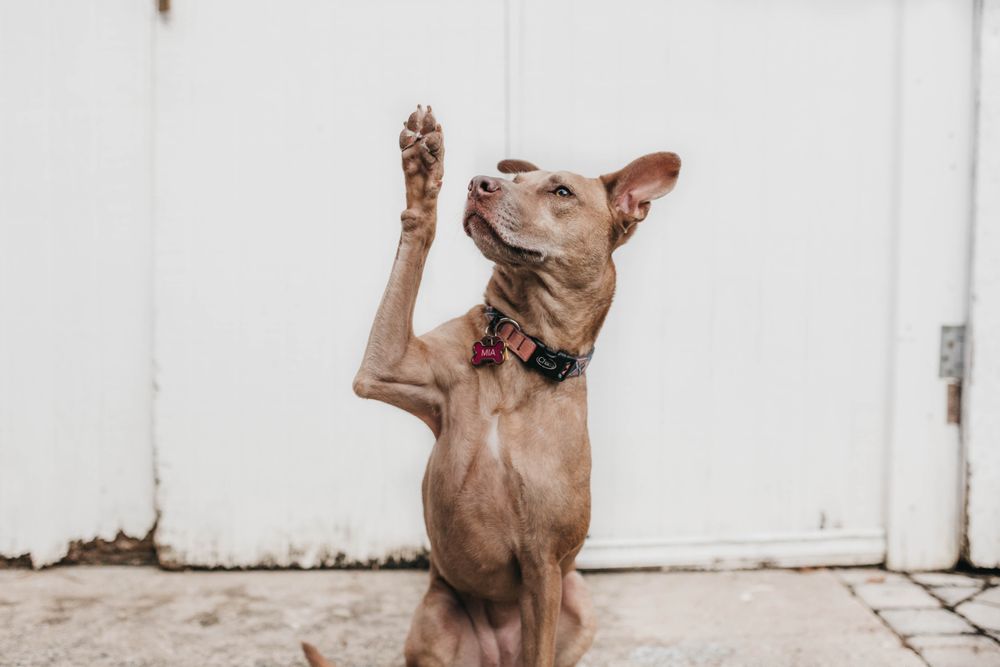House training is typically a number one priority for anyone who has a puppy or new dog in their home. Most of the time this means teaching a dog to pee and poop outside and not inside the house, but you can elevate your house training game by having your dog ring a bell whenever they need to go outside. To help support you and your dog along your house training journey, this article explains:
- Whether or not it’s a good idea to bell train your dog
- Why bell training can be very effective
- How to bell train your dog
- Frequently asked questions about bell training your dog
Is using the bell ringing method for house training a dog a good idea?
The bell ringing method can be a good idea for dogs that have a solid handle on house training. In other words, if your dog is still having accidents in the house, you should wait on bell training and instead focus on the fundamentals of house training. To do this:
- Increase the opportunities your dog has to pee/poop. Instead of one or two long walks each day, keep walks short and make them frequent.
- Refrain from scolding your dog. Getting mad, yelling, rubbing your dog’s face in their pee will do nothing more than make your dog afraid of you and/or afraid to go pee in your presence (including outside where you want them to go).
- Erase mistakes to avoid repeated mistakes. Use an enzymatic cleanser to clean up accidents. Doing so will remove the smell and make your dog less inclined to return to that spot.
- Reduce the area you need to monitor. In between those outings, keep your dog in a confined area of your home where you can see them. A baby gate or keeping your dog leashed indoors is a great option. This way you’ll have more of an opportunity to spot the signs that your dog has to pee / poop.
- Keep a log. Keeping a simple log of when your dog eats and when they relieve themself will help you figure out when to take them out.
- Consider frozen, freeze dried, or dehydrated food. These nutrient rich options can reduce the frequency by which your dog will need to go to the bathroom.
- Reward heavily. When your dog goes in the right spot, reward them with an extra special reward! Give them great treats and tons of verbal praise. Make sure to give it to them after they go, not while they’re going — you don’t want to distract them!
Why training your dog to ring a bell to pee works
Teaching your dog to ring a bell when they need to go to the bathroom is a great way for your dog to clearly communicate their needs. The process works because you and your dog will have a shared language and understanding about when your dog needs to go outside for a potty break.

How to bell train your dog for the bathroom
The process of teaching your dog to ring bells to go outside is a multi-step process that can be worked on slowly over time. Here are the 7 steps:
- Step 1: Condition the sound. Begin by associating the sound of bells with going outside. Place the bells near the door, and at approximately your dog’s nose level. Every time you take your dog out to the potty, give the bells a light ring immediately before opening the door.
- Step 2: How’s your hand “touch”? A solid hand touch/nose targeting behavior is critical to successful implementation of this protocol. Your dog should be able to touch their nose to your hand consistently, with no hesitation, any time you cue this behavior.
- Step 3: Bell targeting, level 1. Once your dog’s hand touch is solid, it’s time to start transferring that targeting behavior to the bells. Start by practicing hand touches with your hand a few inches from the bells; when this is easy for your dog, practice the touch with your fingers directly in front of the bells. When that’s easy, place the bells between your dog’s nose and your hand, so that the nose makes contact with the bells in the process of reaching your fingers. Mark and reinforce when the nose touches the bells, even if the nose doesn’t touch the bells hard enough to make them ring. Touching something so novel may be scary to your dog, so it’s important to use a high-value reward during this time; praise your dog heavily for any successful touch; and make sure you’re using a high rate of reinforcement. Make the exercise easy enough, and rewarding enough, that your dog can get it right at least six times in a minute.
- Step 4: Bell targeting, level 2. When you’ve established that your dog is able to touch their nose to the bells consistently and without hesitation, you can begin taking your hand out of the equation. Reward the dog for touching the bells without your fingers there to prompt them.
- Step 5: Ring, ring, ring! Once your dog is consistently targeting the bells with no hesitation during your training sessions, begin marking and reinforcing only for touches that are strong enough to make the bells ring. You can start by rewarding even a small ring. Be generous with your rewards, as the noise of ringing bells might still be alarming to your dog.
- Step 6: Taking it outside. As your dog begins to ring the bells with more confidence-- doing so with no hesitation, repeatedly begin prompting the nose-touch-to-bells behavior before every outside potty trip, instead of you ringing the bells yourself. As soon as your dog touches the bells, mark, reinforce, and open the door with great enthusiasm.
- Step 7: I want to go outside! If at ANY point, your dog makes the logical “leap” and rings the bell without any prompting, immediately stop what you are doing, and take your dog out! You can still give a treat, but the chance to go outside should be the real reward. If you know you’re not going to be able to do this, take the bells away so that they aren’t available for ringing. The final step of this process is for your dog to make the association that ringing the bells is a way to get the door to open. While your dog is learning to make this association, you must keep up your end of the bargain by rewarding each successful ring with a walk.
Frequently asked questions about bell training dogs
How long does it take to bell train a dog?
Every dog’s timeline is different. The key is to move at your dog’s speed and keep your bell training regime consistent.
How do you introduce a dog to a bell?
To introduce your dog to a bell, begin by associating the sound of bells with going outside. Place the bells near the door, and at approximately your dog’s nose level. Every time you take your dog out to the potty, give the bells a light ring immediately before opening the door.
Why doesn’t my dog let me know he has to go outside?
Your dog likely tried to tell you that they needed to go outside, but you either didn’t notice or misread what your dog was trying to tell you. To help your dog communicate with you, learn to spot the signs that they need to go out. You can also keep a log of when your dog eats and goes to the bathroom; this will help you figure out when to take your dog outside.




